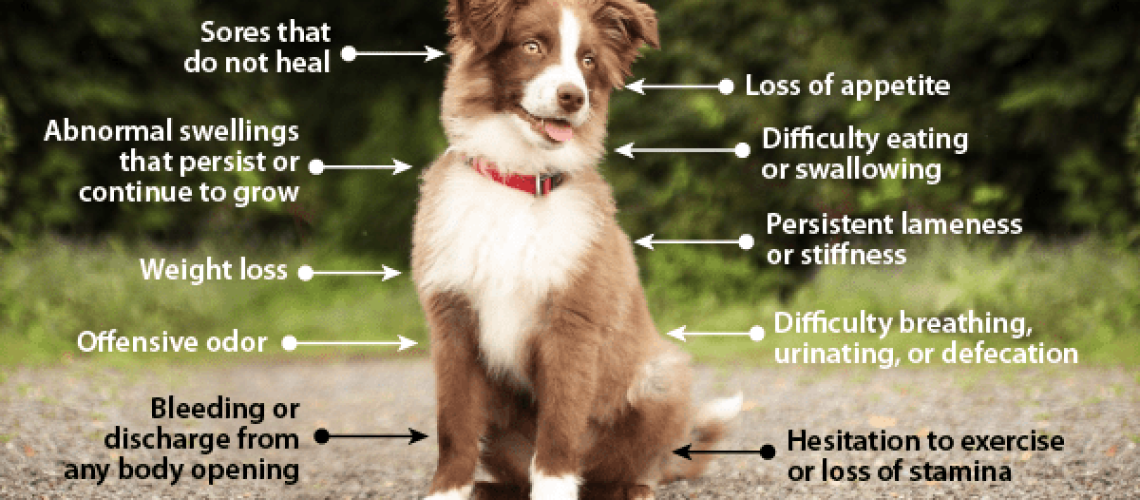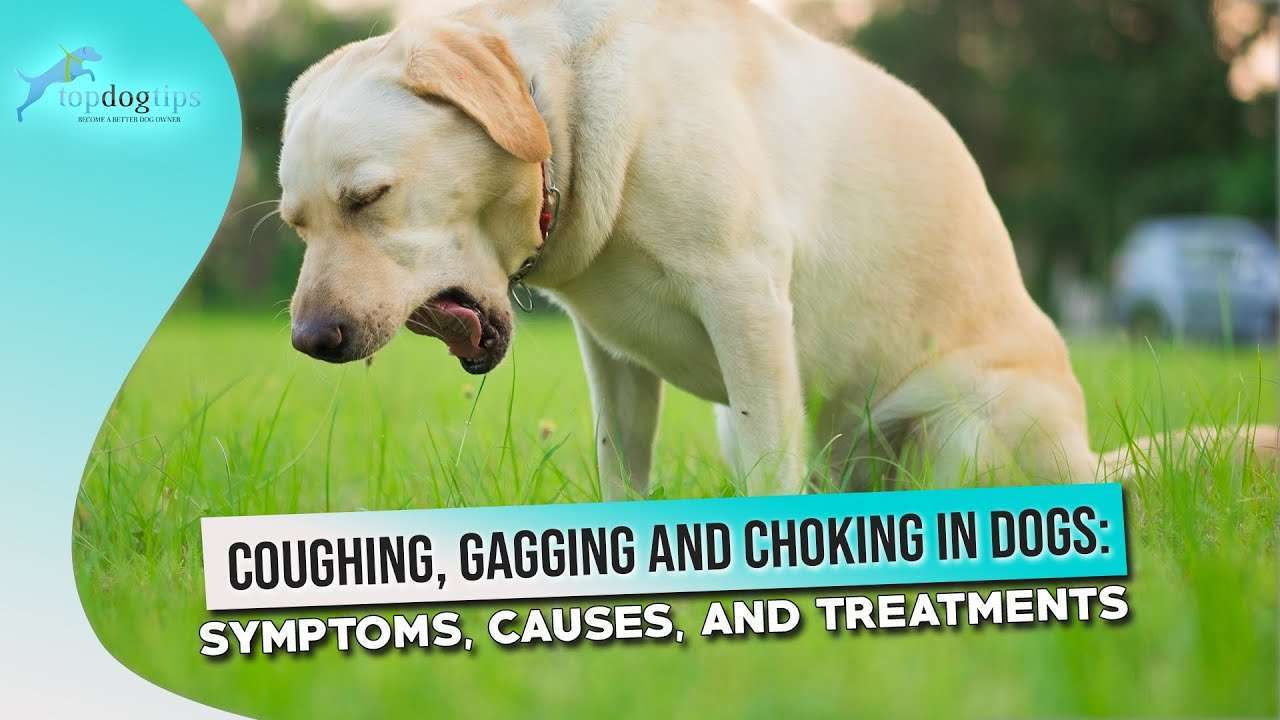Key Takeaways:
- Changes in appetite and weight loss can be warning signs of cancer in dogs. If your dog suddenly loses interest in food or experiences unexplained weight loss, it is important to consult a veterinarian.
- Unusual lumps or bumps on the body should not be ignored. If you notice any new growths or swellings, especially if they are rapidly growing or changing in size, shape, or texture, it could indicate cancer.
- Persistent coughing, difficulty breathing, or abnormal respiratory sounds may be indicative of lung cancer or tumors in the chest area. If your dog shows these symptoms, seek veterinary attention promptly.
- Lethargy and decreased energy levels can be early signs of cancer. If your typically active dog becomes unusually tired and lacks enthusiasm for activities they used to enjoy, it could be a red flag.
- Abnormal bleeding from any part of the body should not be overlooked. This includes bleeding from the nose, mouth, ears, urinary tract, or rectum. It may indicate various types of cancers and requires immediate veterinary evaluation.
Are you a dog lover? Do you want to ensure the health and happiness of your furry friend? If so, then understanding the warning signs of cancer in dogs is essential. By delving into this topic, you will gain valuable knowledge that can potentially save your dog's life. Did you know that 1 in every 3 dogs will develop cancer during their lifetime? That's a staggering statistic! But don't worry, because by being aware of the warning signs, you can catch it early and increase the chances of successful treatment. So let's dive into this important subject and learn how to protect our beloved canine companions from this deadly disease. Remember, knowledge is power when it comes to your dog's health!
Common Warning Signs of Cancer in Dogs
Cancer is a disease that can affect dogs, just like it affects humans. It's important for dog owners to be aware of the warning signs of cancer so that they can seek veterinary help as soon as possible. Some common warning signs of cancer in dogs include:
1. Unexplained weight loss: If your dog is losing weight without any changes in their diet or exercise routine, it could be a sign of cancer. Weight loss can occur because the cancer is affecting the dog's appetite or because the cancer is using up the body's energy.
2. Changes in appetite and drinking habits: Dogs with cancer may experience a decrease in appetite or an increase in thirst. They may eat less or refuse to eat altogether. They may also drink more water than usual, which can be a sign that something is not right.
It's important to remember that these warning signs can also be caused by other health issues, so it's essential to consult with a veterinarian for a proper diagnosis if you notice any of these symptoms in your dog.
How to Spot Unexplained Weight Loss in Your Dog
Weight loss in dogs can be concerning and may indicate an underlying health issue, including cancer. As a responsible pet owner, it's crucial to keep an eye out for unexplained weight loss and take appropriate action. Here are some tips on how to spot unexplained weight loss in your dog:
1. Regularly weigh your dog: Weighing your dog regularly allows you to track any changes accurately. Use a scale designed for pets and record their weight at least once a month.
2. Observe their body condition: Run your hands along your dog's ribcage and spine regularly to check if you can feel their bones easily. A healthy-weighted dog should have some fat covering these areas but not too much.
If you notice sudden or gradual weight loss in your dog, it's essential to consult with a veterinarian. They can perform a thorough examination and run tests to determine the cause of the weight loss and provide appropriate treatment if necessary.
Paying Attention to Changes in Your Dog's Appetite and Drinking Habits for Early Cancer Detection
As a dog owner, paying attention to changes in your dog's appetite and drinking habits can help in the early detection of cancer. Here are some signs to watch out for:
1. Decreased appetite: If your dog suddenly loses interest in their food or eats significantly less than usual, it could be a sign of an underlying health issue, including cancer. Monitor their eating habits closely.
2. Increased thirst: Excessive thirst or frequent water intake can indicate an issue. If your dog is drinking more water than usual without any apparent reason (such as hot weather or increased physical activity), it's worth investigating further.
Remember that these changes can also be caused by other factors, such as stress or minor illnesses. However, if you notice persistent changes in your dog's appetite or drinking habits, consult with a veterinarian for a proper examination and diagnosis.
Behavioral Changes in Dogs That Could Indicate Cancer
Dogs may exhibit behavioral changes when they have cancer. While these changes are not exclusive to cancer and can occur due to other reasons as well, it's essential to be aware of them. Some behavioral changes that could indicate cancer include:
1. Lethargy: If your usually active and energetic dog becomes unusually tired and lacks enthusiasm for activities they used to enjoy, it might be a sign that something is wrong.
2. Aggression or irritability: Dogs with cancer may experience pain or discomfort that leads to increased aggression or irritability towards people or other animals.
If you notice any significant shifts in your dog's behavior that persist over time, it's crucial to consult with a veterinarian. They can evaluate your dog's overall health and determine if further diagnostic tests are necessary.
Identifying Abnormal Lumps or Bumps on Your Dog's Body: Early Warning Signs of Cancer
Finding abnormal lumps or bumps on your dog's body can be alarming, but it's essential not to panic. While not all lumps are cancerous, it's crucial to identify and monitor them for any changes. Here are some early warning signs of cancer-related lumps:
1. Rapid growth: If you notice a lump that is growing rapidly in size, it could be a cause for concern. Keep an eye on the lump and measure its dimensions regularly.
2. Irregular shape or texture: Cancerous lumps may have an irregular shape or feel different from the surrounding tissues. They might be hard, firm, or immovable.
If you discover any unusual lumps or bumps on your dog, it is best to consult with a veterinarian promptly. They can perform a thorough examination and recommend further tests such as biopsies if necessary.
The Importance of Seeking Veterinary Help for Any Unusual Symptoms in Your Dog, Even if They Seem Minor
As a loving pet owner, it's important to remember that even seemingly minor symptoms in your dog should not be ignored. Early detection and treatment are vital when it comes to cancer or any other health issue. Here's why seeking veterinary help is crucial:
1. Accurate diagnosis: Veterinarians have the expertise and tools to accurately diagnose your dog's condition. What may seem like a minor symptom could potentially indicate something more serious.
2. Timely treatment: The sooner you seek veterinary help, the better the chances of successful treatment and management of your dog's condition.
Remember that dogs cannot communicate their discomfort as effectively as humans do, so it's up to us as responsible pet owners to pay attention to any changes in their behavior, appetite, or physical appearance. If you notice anything unusual or concerning, don't hesitate to consult with a veterinarian. They can provide the necessary guidance and support for your dog's health and well-being.
Common Warning Signs of Cancer in Dogs
Cancer is a serious disease that can affect dogs just like it affects humans. As a responsible pet owner, it's important to be aware of the common warning signs of cancer in dogs so that you can seek veterinary help as soon as possible. Some common warning signs include:
- Unexplained weight loss
- Lack of appetite
- Lethargy or decreased energy levels
- Persistent coughing or difficulty breathing
- Abnormal swellings or lumps on the body
- Changes in bathroom habits, such as frequent urination or diarrhea
If you notice any of these warning signs in your dog, it's crucial to consult with a veterinarian. Early detection and treatment can greatly improve the chances of successful outcomes for your furry friend.
How to Spot Unexplained Weight Loss in Your Dog
Unexplained weight loss in dogs can be an indication of an underlying health issue, including cancer. It's important to monitor your dog's weight regularly and be alert to any sudden changes. Here are some steps you can take to spot unexplained weight loss:
- Weigh your dog regularly using a pet scale or by visiting the veterinarian.
- Pay attention to changes in their body shape and appearance.
- Observe if their collar becomes loose or if you can feel their ribs more easily.
- Note any decrease in appetite or changes in eating habits.
- If you notice significant weight loss without any obvious explanation, it's crucial to consult with a veterinarian for further evaluation and diagnosis.
Remember, early detection of weight loss can help identify potential health issues, including cancer, and allow for timely intervention.
Paying Attention to Changes in Your Dog's Appetite and Drinking Habits for Early Cancer Detection
Your dog's appetite and drinking habits can provide valuable insights into their overall health. Changes in these behaviors may indicate the presence of an underlying health issue, including cancer. Here are some key signs to watch out for:
Decreased Appetite:
If your dog suddenly loses interest in food or eats significantly less than usual, it could be a red flag. Keep track of their eating patterns and consult with a veterinarian if you notice persistent changes.
Increased Thirst:
If your dog starts drinking more water than usual or seems excessively thirsty, it's important to take note. Frequent urination coupled with increased thirst may indicate an underlying health problem that requires medical attention.
Sudden Changes in Eating Habits:
Pay attention if your dog starts exhibiting unusual eating behaviors such as chewing on one side of the mouth, dropping food while eating, or struggling to eat hard kibble. These changes could be indicative of oral tumors or other dental issues associated with cancer.
By closely monitoring your dog's appetite and drinking habits, you can potentially detect any abnormalities early on and seek appropriate veterinary care.
Behavioral Changes in Dogs That Could Indicate Cancer
Dogs communicate through their behavior, and certain behavioral changes can be warning signs of underlying health problems like cancer. It's essential to pay attention to any unusual behaviors exhibited by your furry companion. Here are some behavioral changes that could indicate cancer:
- Increased irritability or aggression
- Withdrawal or sudden changes in social interaction
- Excessive licking or scratching of a specific area
- Changes in sleep patterns, such as insomnia or excessive sleepiness
- Loss of interest in activities they once enjoyed
- Persistent anxiety or restlessness
If you notice any of these behavioral changes in your dog, it's important to consult with a veterinarian. While these behaviors may not always be indicative of cancer, they warrant further investigation to ensure the well-being of your beloved pet.
Identifying Abnormal Lumps or Bumps on Your Dog's Body: Early Warning Signs of Cancer
Finding abnormal lumps or bumps on your dog's body can be alarming, but it's crucial not to panic. Not all lumps are cancerous, but it's essential to have them evaluated by a veterinarian for proper diagnosis and treatment. Here are some key steps to follow when identifying abnormal lumps:
- Gently run your hands over your dog's body during regular grooming sessions to check for any new growths.
- Pay attention to the size, shape, and texture of the lump. Cancerous lumps may feel firm, irregularly shaped, and attached to underlying tissues.
- Note any changes in the lump over time, such as rapid growth or ulceration.
- If you discover any suspicious lumps or bumps, make an appointment with a veterinarian for a thorough examination and possible biopsy.
Remember that early detection is key when it comes to treating cancer in dogs. Regularly checking for abnormal lumps can help catch potential issues at an early stage and improve the chances of successful treatment outcomes.
The Importance of Seeking Veterinary Help for Any Unusual Symptoms in Your Dog, Even if They Seem Minor
As a loving pet owner, it's crucial to prioritize your dog's health and well-being. Even seemingly minor or insignificant symptoms should not be ignored, as they could be early warning signs of a more significant underlying issue like cancer. Here's why seeking veterinary help for any unusual symptoms is essential:
- Early Detection: Many cancers are more treatable when detected early. Prompt veterinary attention can lead to timely diagnosis and intervention.
- Accurate Diagnosis: Only a veterinarian can accurately diagnose the cause of your dog's symptoms. Self-diagnosis or delay in seeking professional help may result in incorrect assumptions and delayed treatment.
- Peace of Mind: Consulting with a veterinarian will provide reassurance and peace of mind, knowing that you have taken the necessary steps to ensure your dog's health.
Remember, you know your dog best. If something seems off or different about their behavior or physical condition, trust your instincts and consult with a veterinarian promptly.
In conclusion, it's important to be aware of the warning signs of cancer in dogs. By noticing early symptoms such as lumps, weight loss, or changes in appetite, we can help our furry friends get the necessary medical attention and potentially increase their chances of recovery.
How do dogs act when they detect cancer?
Since then, there have been multiple reports of dogs being able to detect cancer in their owners by consistently sniffing or nudging a specific area of their body. Tumors release volatile organic compounds, which can be found in urine, breath, and sweat.
At what age does cancer show up in dogs?
In a group of over 3,400 dogs, the ages at which they were diagnosed with cancer ranged from less than 1 year to 20 years, with an average age of 8.8 years. The data was collected on February 1, 2023.
Where does cancer usually start in dogs?
Lymphoma is the most frequently observed type of cancer in dogs. It starts in the lymphatic system, specifically the lymph nodes, and has the potential to spread to a dog's bone marrow and internal organs. In rare cases, it may also spread to the skin and/or lungs.
Do dogs act sick when they have cancer?
In the advanced stages of various types of cancers, symptoms such as extreme fatigue, vomiting, diarrhea, reduced appetite, weight loss, and a lack of energy may be observed in dogs with lymphoma.
How long can a dog live with cancer untreated?
Without treatment, the typical amount of time a person can expect to survive after being diagnosed is approximately two months. However, chemotherapy can extend this survival time, sometimes up to 12 months or even longer. It is important to note that not all lymphomas respond positively to chemotherapy.
Do dogs know when they have cancer?
The diagnosis of cancer in your dog does not necessarily mean that they are immediately going to die. It's important to remember that your dog may not even be aware that they are sick.

















